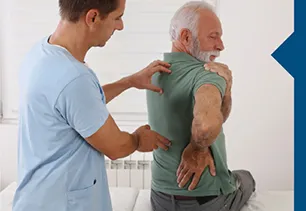If you are over the age of 65, I am going to ask you a question. Do you feel that you exercise enough? Are you getting out and walking or biking? Maybe you’re going to the gym or hitting the pool? The numbers tell us that chances are, you’re not.
Studies show that up to 75% of people over 65 aren’t as active as they should be. And we’re talking about a lot of people. By the year 2030, 22% of our population will be over the age of 65. That’s 70 million people! We know that as medicine continues to improve, we are living longer. Heck, even the insurance companies are recognizing the benefits of exercise. The majority of them are covering payments for exercise programs such as Silver Sneakers. They realize that it is easier to keep people healthy than it is to try to heal them when they become sick.
So why aren’t we exercising more? Well, heaven knows there are many excuses. People report being too tired or not having the time. Some say that their body hurts. And who would want to exercise when they hurt?! Won’t it cause more pain? Other excuses include not knowing what types of exercises to do, finding exercise to be boring, or even not wanting to redo their makeup or hair. The one excuse we can’t use is: “I’m too old”.
Research studies continue to show the benefits of exercise in the elderly population. It’s simple. You exercise and you’ll live longer. Exercise helps nearly all systems in the body. The cardiovascular system, or the heart and body’s ability to pump blood, really benefits from exercise. Exercise helps to lower blood pressure, improves diseases such as CHF (congestive heart failure), and reduces the risk of coronary artery disease which can lead to heart attack. In fact, after someone has a heart attack, what do they do for rehabilitation? That’s right. They exercise.
As we see a rise in obesity in our country, we also see a rise in diabetes. Exercise can help reduce the incidence of diabetes. Exercise helps prevent osteoporosis, or the softening of bones. It decreases bone density loss, especially in women, and also reduces fractures. Osteoarthritis effects the majority of us at some point, and guess what? Exercise is good for that, too. In fact, research shows that symptoms associated with arthritis consistently improve with exercise. That means less pain and improved function. Cancer rates, obesity, and falls are other areas that improve with exercise.
There are also psychological benefits of exercise. It can help improve short term memory, sleeping ability and reduce depression.
When we look at different types of exercise, we usually break it down to 4: strengthening, flexibility, balance and endurance. Strength refers to the amount of force a muscle can produce. Strength training is performed by applying resistance to a movement. Muscle strength decreases 15% per decade over the age of 50 and 30% after 70. Often people think that walking or “staying active” with tasks like cleaning or yard work will keep them strong, but sometimes that’s not enough. Exercises for strengthening specific muscles might be necessary. Joining a gym for strength training is great, but it’s not necessary. Studies show that PRT, or Progressive Resistance Training, is usually enough. PRT is moving joints through a range of motion with or without resistance, and it can be performed anywhere! Resistive bands or small weights at home are a great way to get started. Usually between 2-6 sets of 8-12 reps is enough to increase muscle strength. Flexibility plays a vital role in mobility and range of motion in our joints especially as we age. Stretching is a great way to improve (or at least maintain) extensibility in muscles, tendons and joints, and ensures that we maintain ability to perform daily tasks. It can be hard to reach the top shelf if the shoulder isn’t moving well, or challenging to put on your socks with a tight hip. 10 minutes of stretching 2-3x/week is recommended. Balance issues often arise with aging and lead to increased fall risk. Falls or just the fear of falling can lead to avoidance of exercise or movement! The good news is, like strength, we can improve our balance if we challenge it! Using a chair or countertop for support can be effective and safe when working on balance exercises. Finally, endurance training is the body’s ability to perform activity or movement over time. Aerobic exercise is used for endurance training and includes tasks such as walking, biking, jogging or swimming. Endurance training improves the body’s capacity to deliver oxygen to the tissues. Ideally, this should be done at least 2x/week, though 3-5x/week is best. 20 minutes seems to be the general standard for the amount of time to perform endurance exercise.
Physical therapists are movement and exercise experts. Reach out to the therapists at Lifeline for an individualized exercise program!

